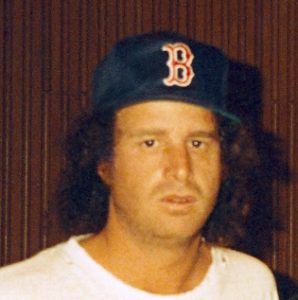by James Scott Bell
@jamesscottbell
 My favorite philosopher/comedian is Steven Wright, master of the pithy weird-but-somehow-connected observation, such as, “I used to work in a fire hydrant factory. You couldn’t park anywhere near the place.”
My favorite philosopher/comedian is Steven Wright, master of the pithy weird-but-somehow-connected observation, such as, “I used to work in a fire hydrant factory. You couldn’t park anywhere near the place.”
He also invented a microwave fireplace. “You can lie down in front of a fire for the evening in two minutes.” (He also put instant coffee in a microwave and almost went back in time.)
Which reminds me that we are all pressed for time these days (I’ve determined to work 25 hours a day on my book, which means I have to get up an hour earlier).
This goes for keeping the ol’ bod in shape. Which is why I’m into HIIT. That stands for “high impact interval training.” It’s a workout that alternates intense bursts of activity (sometimes as little as 30 seconds) with a short rest, then another burst, rest, etc. This way, so “they” say, you can get great cardio benefits in as little as four minutes. Which beats driving to a gym, waiting for a machine, working out for thirty or forty minutes, showering, getting dressed, and driving home while thinking, “Where has the day gone?”
I’ve integrated HIIT into my routine, along with strength training on an official Chuck Norris Total Gym. I want to be like Chuck. When he does a pushup, he does not actually push himself up; he pushes the Earth down.
I thought about this the other day when I was quota challenged. I needed words and needed them fast, but I was tied up with my inner editor, the pest, and indulging in too much thinking and strategizing. This wasn’t about my outline, with my signpost scenes. It was about those spaces in between, in the scenes, that were giving me pause.
Frustrated, I opened up a blank text note and just started writing without thinking, typing to oil the gears, writing (in Ray Bradbury’s phrase) by jumping off a cliff and growing wings on the way down.
What happened was the first few lines came along, but without much meat on them. Then the wings started to form. I was writing in flow, flapping wildly, and the words were coming from that magical place just beneath the surface. As I wrote I didn’t stop to analyze; I just felt the rich vein of story I’d tapped into and wanted to record it as fast as I could.
When I stopped I checked to see how many words I’d written. I kid you not, it was exactly 250. If you’ve read my craft articles long enough, you’ve probably run into my idea of “The Nifty 250” (sometimes enlarged to 350). I like to do that early in the morning, to get a jump on the writing day. But it also works when you’re well into the day and feel stuck.
That gave me the idea for HIIW—high impact interval writing. Why not do this all the time? Why not work in increments of 250 words? Write them, get up, walk around, deep breathe, stretch, sit back down, analyze, and integrate the good stuff into your draft. Then do it again.
This is a bit like the Pomodoro Technique, developed by entrepreneur Francesco Cirillo when he was a university student.
Cirillo recognized that time could be turned into an ally, rather than a source of anxiety. The Pomodoro Technique essentially trains people to focus on tasks better by limiting the length of time they attempt to maintain that focus and ensuring restorative breaks from the effort. The method also helps them overcome their tendencies to procrastinate or multitask, both of which are known to impair productivity.
Try this next time you’re stuck:
- Open up a blank document. (This gives you total freedom to write)
- Start writing, and let it flow, forgetting about trying to shape into anything. Get the words down fast and furious. Go for 250 words (that’s about one page, double spaced, 12 pt. type).
- Get up, stretch, take a deep breath, pour yourself some more coffee or tea, then look at what you wrote.
- Highlight the gold nuggets and expand on them if you like.
- Copy-paste the nuggets into your draft.
I’m mostly an old school, butt-in-chair writer. If I’m going good, even after meeting my quota I’ll keep on writing until I sense the beginning of diminishing returns. With HIIW, I’ve found the words come faster and fresher. As the great Ray put it:
“This afternoon, burn down the house. Tomorrow, pour cold critical water upon the simmering coals. Time enough to think and cut and rewrite tomorrow. But today—explode—fly apart—disintegrate! … It doesn’t have to be a big fire. A small blaze, candlelight perhaps…Look for the little loves, find and shape the bitternesses. Savor them in your mouth, try them on your typewriter.” — Ray Bradbury, Zen in the Art of Writing
What kind of writer are you? Sit down and grind it out? Write when you feel like it? Or something in between?



